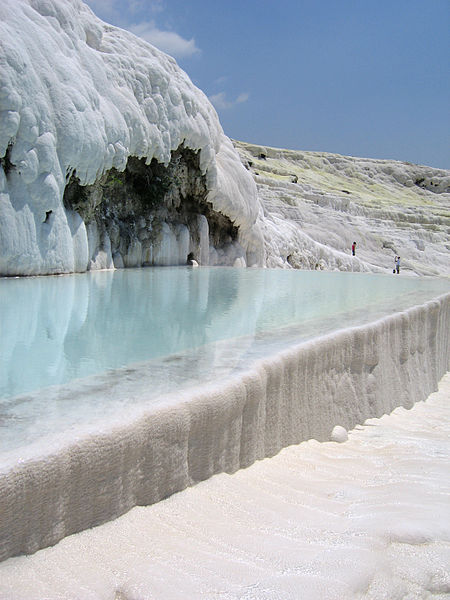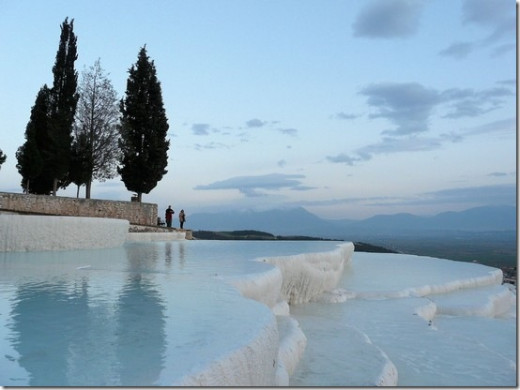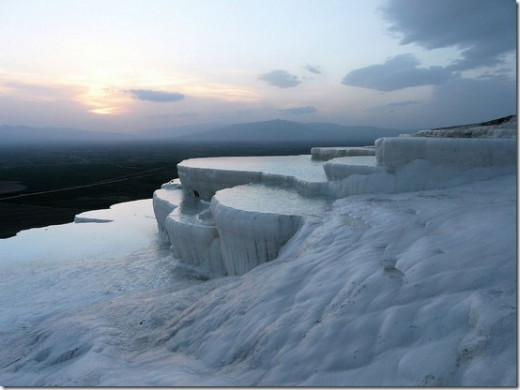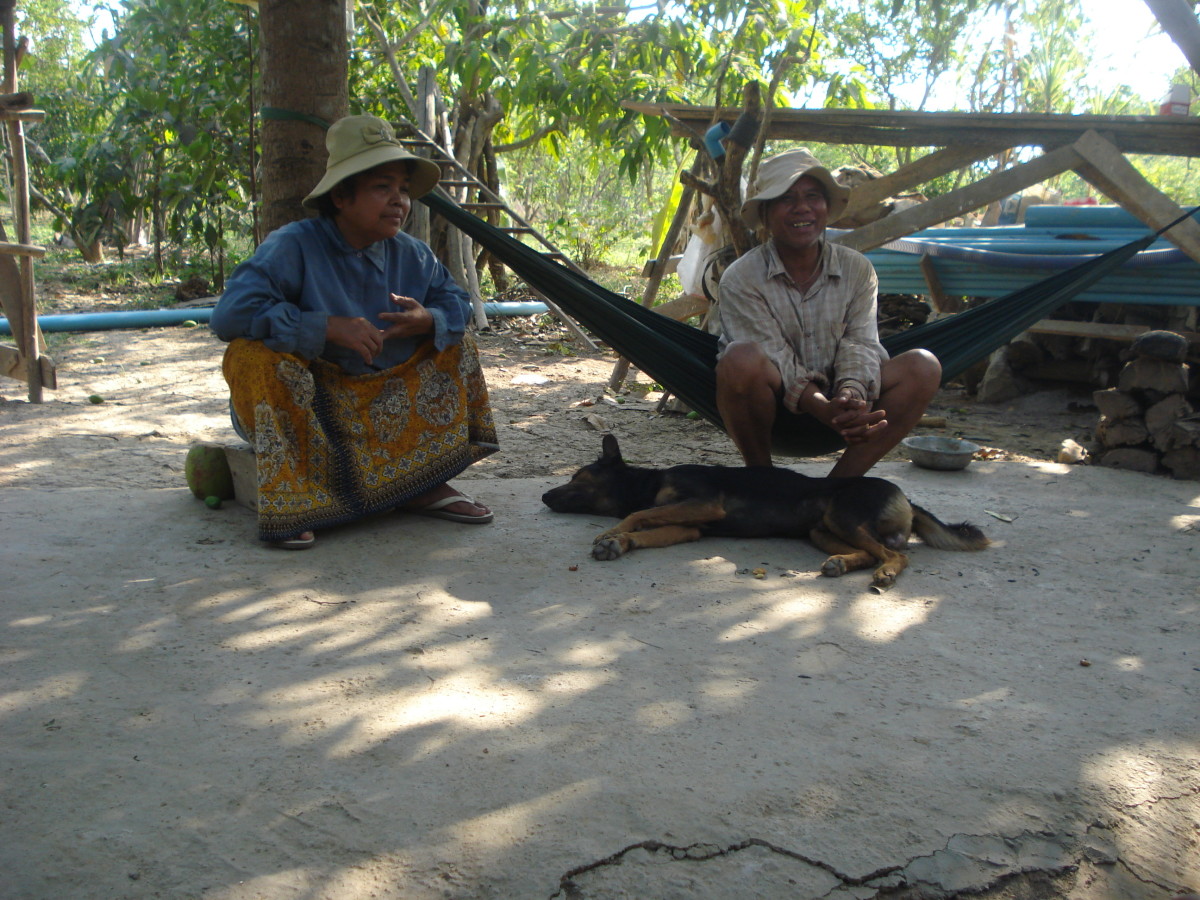The Unique Natural Hot Spring: Pamukkale

Pamukkale is a natural site contains hot springs and travertines shaped in layered terraces. In Turkish, Pamukkale means ‘Cotton Castle’ because the place where it called as Pamukkale's surface looks white in color similar as cotton. Pamukkale is located in the main south from the Aegean region, Turkey. To reach there is about 19 kilometers to Denizli where it is located and about 2, 5 hours to drive through the location from Kusadasi resort town. The Menderes River that has tectonic movement from the basin induced and raise numerous hot springs. The water from these springs boasts huge substantial minerals such as chalk, limestone and travertine cascading down through the mountain, providing the developing of the complexion and becomes a frozen waterfall. The waters that flow here also contain hydrogen carbonate and calcium, that the final result of the sedimentation of calcium bi-carbonate. This wonderful place is developing in Menderes Valley. The place is inside the borders between Caria, Lycia and Phrygia. This amazing area locates on Curuksu Valley, often known as Lycos in antiquity where it is in altitude involving 360 meters through the sea levels and 70 meters through the Lycos Valley.
Pamukkale created with the calcium oxide-rich waters sweeping down through the south downhill of Cal Mountain transported deposits and created white travertines found on the north Ruins, within the millennia, which is a plateau. Upon nearing Pamukkale, you will see a rock pattern more than 100 meters tall soaring way up through the plain. Pamukkale's distance is concerning 2,700 meters (or 8, 860 ft) long, 1000 meters (or 1,970 ft) wide than 160 meters (or 525 ft) in high. The actual slopes of the mountain, which it is, seem like wonderful white speck from a distance. It is usually coated with numerous pools and terraces. When you come even closer, then you can see and observe this particular natural phenomenon that makes up the frozen waterfall with remarkable size.
According to scientific explanation of this frozen terraced waterfall, the hot thermal places which are hidden under the mountain make the calcium carbonate to leak and make forms of travertine’s marble shaped like layered terraces. The actual temperature from the water that flows creating the travertines, which develop through the hot springs from the hills above it and flows around 33°C. It is in fact quite hot when use for bathing (throughout six months from each years) in the open-air pools and in the terraces because the water flows loses the heat when it flows through the open channels although it also flows through the hot springs.

Upon rising to the surface, the solution calcium-carbonate in the water flows decomposes into co2, calcium carbonate and water. The calcium carbonate which is separate from the water, forms a sediment stone with gray and white colors while the co2 released into the air. The base of the water is from the water-courses then filled with these limestone deposits along with the water from the flows, then the base is split into several obstacles due to water flowing.
The water flows within the slopes into every formed pool. It is like these layered terraces made up of levels from the acquired limestone sediment happen to be progressively created, through the ages. As the limestone sediment extends to a certain level, the stream of spring water gathered in the pools and then the pools filled up seeing that these types of private pools fill, flow into small pools around and fill up the small basins around. The layers of limestone in the pools rise up in measures, form into layered terraces. The continuos stream of the spring water continues to build up the terraces.

The calcium oxide contained in the spring water develops the thickness of the terrace layers; make the pools in wonderful shape like a pile of oyster shells. Then, the small amount of sulphur and forming iron oxide develops into yellow, red and green stripes, crimson within the white from the limestone. On the edge side of the terraces that has been develop into fascinating layered terraces, hang the white stalactites that made solid pattern on surrounding terraces and you can hear the sounds of splashing waters and the flows of the hot spring as they flows down through the slopes in which their stream can be impeded solely by clumps of oleanders.
Tourism almost made the Pamukkale slightly destroyed. Calcium deposits have eroded and the volume to create the layered terraces has been decreased and the structure of Pamukkale has been damaged. Within the earlier 1990s, after Pamukkale declared as one of the UNESCO world heritage site, restrictions had been ruling for the Pamukkale. The site is then restricted for visitors, hotels near the site were destroyed, and paths had been placed throughout the site. This kind of method to protect Pamukkale seemed to be successful as for now Pamukkale is actually able to deposit adequate calcium to keep the site strong and Pamukkale has been restored to the required levels to preserve the development of layered terraces.



